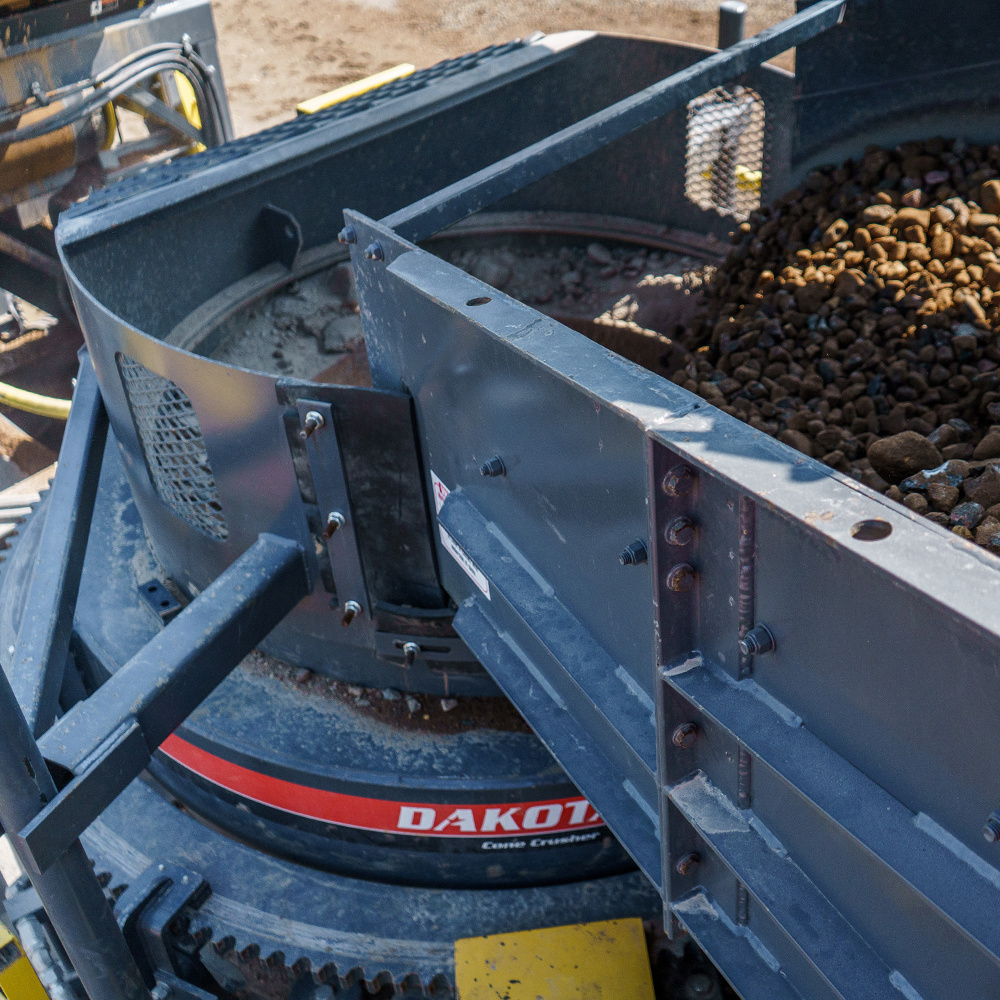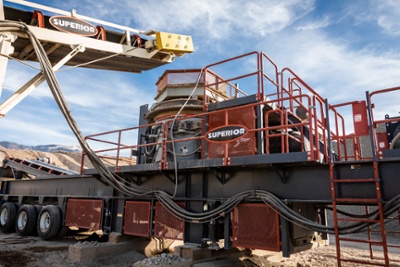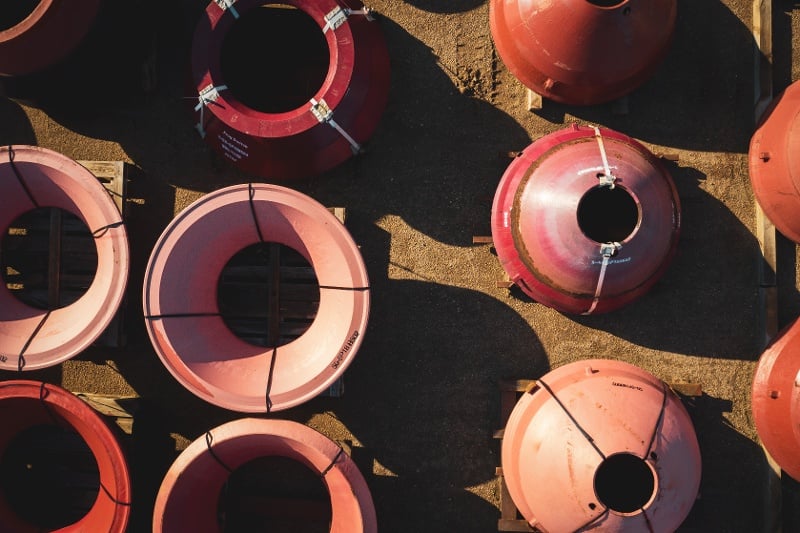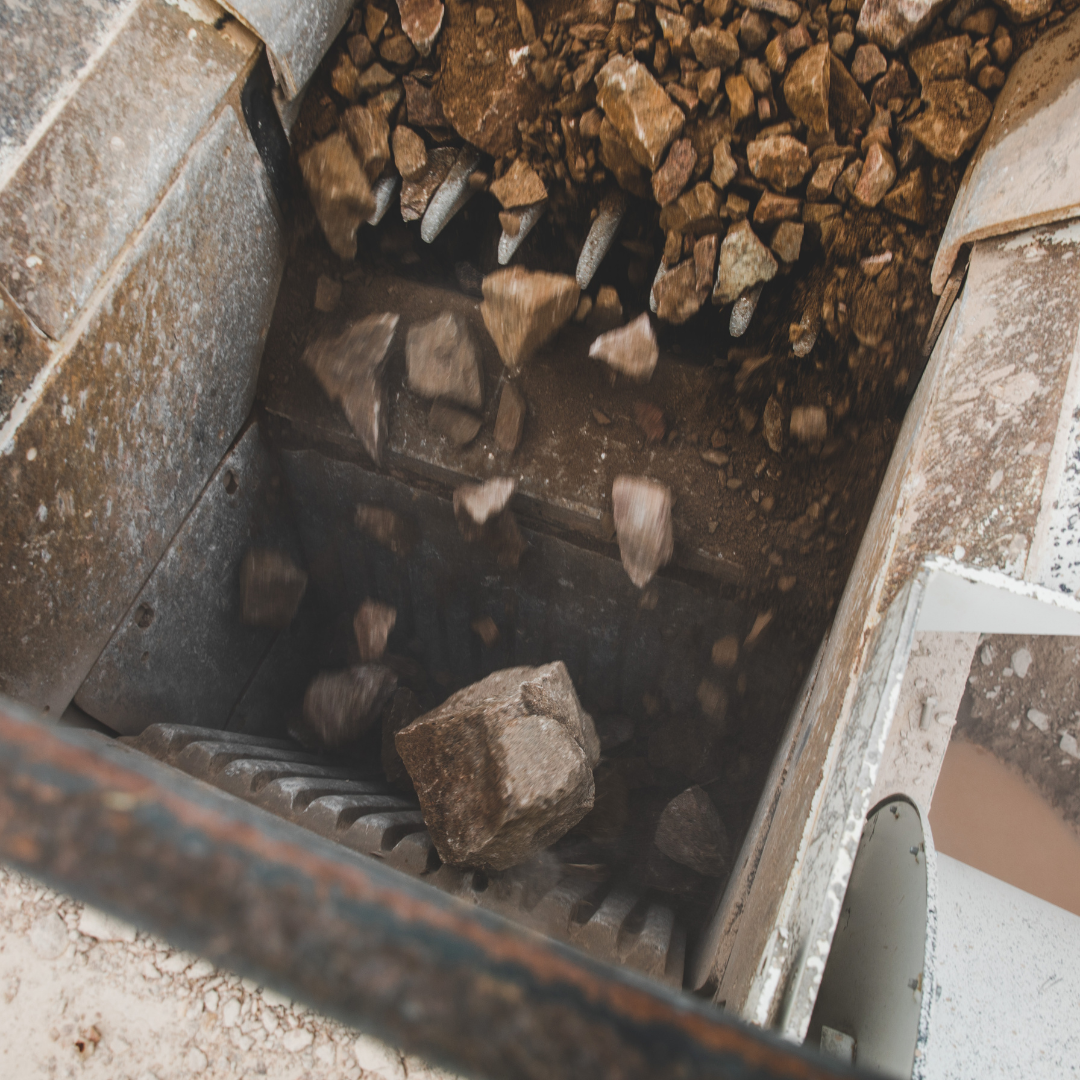Tech Tip: Timing Cone Liner Changeouts
Find the Sweet Spot for Efficiency and Wear Life
What’s the strategy behind pinpointing the optimum time for a cone liner changeout? How do you determine just the right time to do it?
“Properly timed changeouts lead to greater crushing efficiency and liner performance,” says Curt Theisen, crushing technical support engineer for Superior Industries. “Wear rates and wear patterns differ based upon application parameters. The overall goal is maintaining the desired feed opening throughout the life of the liner to get the most utilization out of the wear part,” he says.

Utilization Targets
While the typical operation may achieve as little as 35% liner utilization, and must discard the rest, Theisen says that at least 50% liner utilization is the desired target. Weigh the liners when they are new and after they are changed out, with the goal of the worn liners weighing no more than half of their weight at installation.
When working with a new set of liners, a good first step is following the manufacturer’s guidelines for liner assembly. Typically, product installation instructions will indicate the open-side and closed-side feed openings for each specific liner assembly. Depending upon the feed openings and liner configurations, the instructions will illustrate the optimum dimensions between the adjustment cap and the top of the adjustment ring itself. As the liner wears throughout its utilization, that dimension changes. Once the adjustment cap hits a predetermined distance (which is noted on the assembly specifications) from the adjustment ring – that’s a good indication that the liners need to be changed out.
Wear Performance
To ensure ongoing efficiency, it’s wise to monitor the wear performance statistics on a set of liners throughout their lifecycle. Did the liners meet or exceed expectations? How many hours of crushing do you average throughout the life of the liners?
Importantly, if you’re using a belt scale, examine the total tonnage of product throughput you get from a particular set of liners. Once you’ve identified that desired tonnage, you can monitor any reduction in throughput. As the liners wear, the crusher is adjusted to keep a consistent closed-side setting – and the actual feed opening at the top of the liner cavity starts to close off.
Once you begin to lose up to 10-percent of crusher throughput, you cannot gain back the money lost in that percentage of product reduction. At that point, it’s best to change out the liners – even if they are not fully worn.
Bottom line, determine whether your liners are the best choice for your feed materials, specifications, and product demands. Know the value that you are getting from your wear parts and ensure that you continually reach your throughput goals by properly timing your liner changeouts.

OptimizeU - Strategic Learning
Pursue greater production with comprehensive online courses in crushing, screening, conveying, and washing. Check out the premiere training resource in the construction aggregates industry.
Related Content

Cone Liner Selection: The Right Data for the Right Fit
Select the right cone crusher liner by understanding your application and feed size. Collaborate with experts to optimize processing circuits.

Boost Cone Liner Wear Life: Get Up to 30% More Wear Life
Boost cone crusher liner wear life by up to 30% with proper work-hardening and consistent choke feeding strategies. Enhance efficiency, lifespan, and profitability.

Jaw Liner Selection: A Choice for Cost-Efficiency & Product Quality
Having the correct jaw crusher liner for your specific application is essential for plant and product efficiency.
